AMD X670/B650 Motherboard Overview: 20-Plus Motherboards for AM5
X670 chipsets arrive sporting the new LGA-based AM5 socket, DDR5 and PCIe 5.0 support and more.
ASRock
- Improved aesthetics and power delivery
- Wi-Fi 6E on most boards
- PCIe 5.0 storage/slots (X670E)
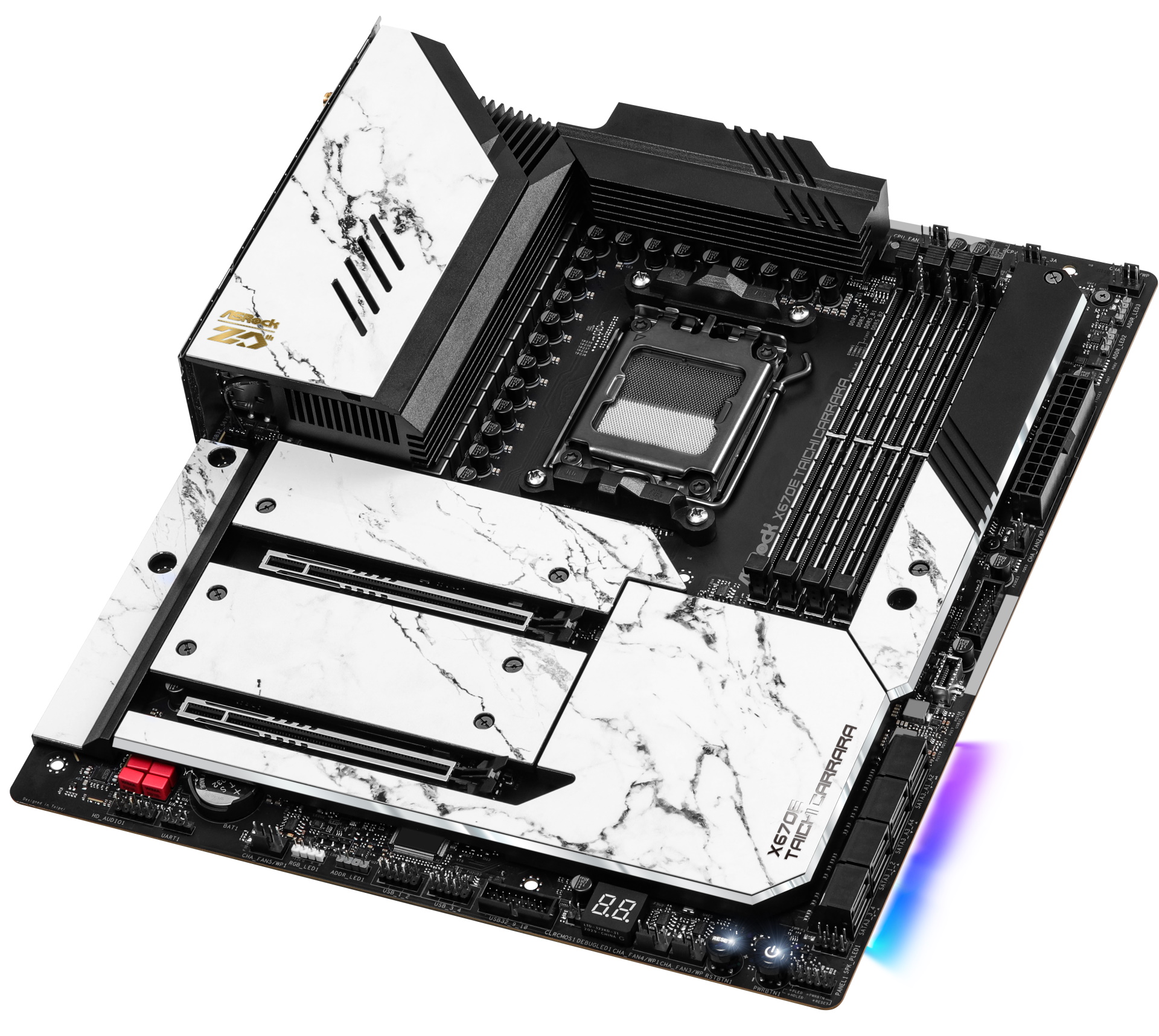
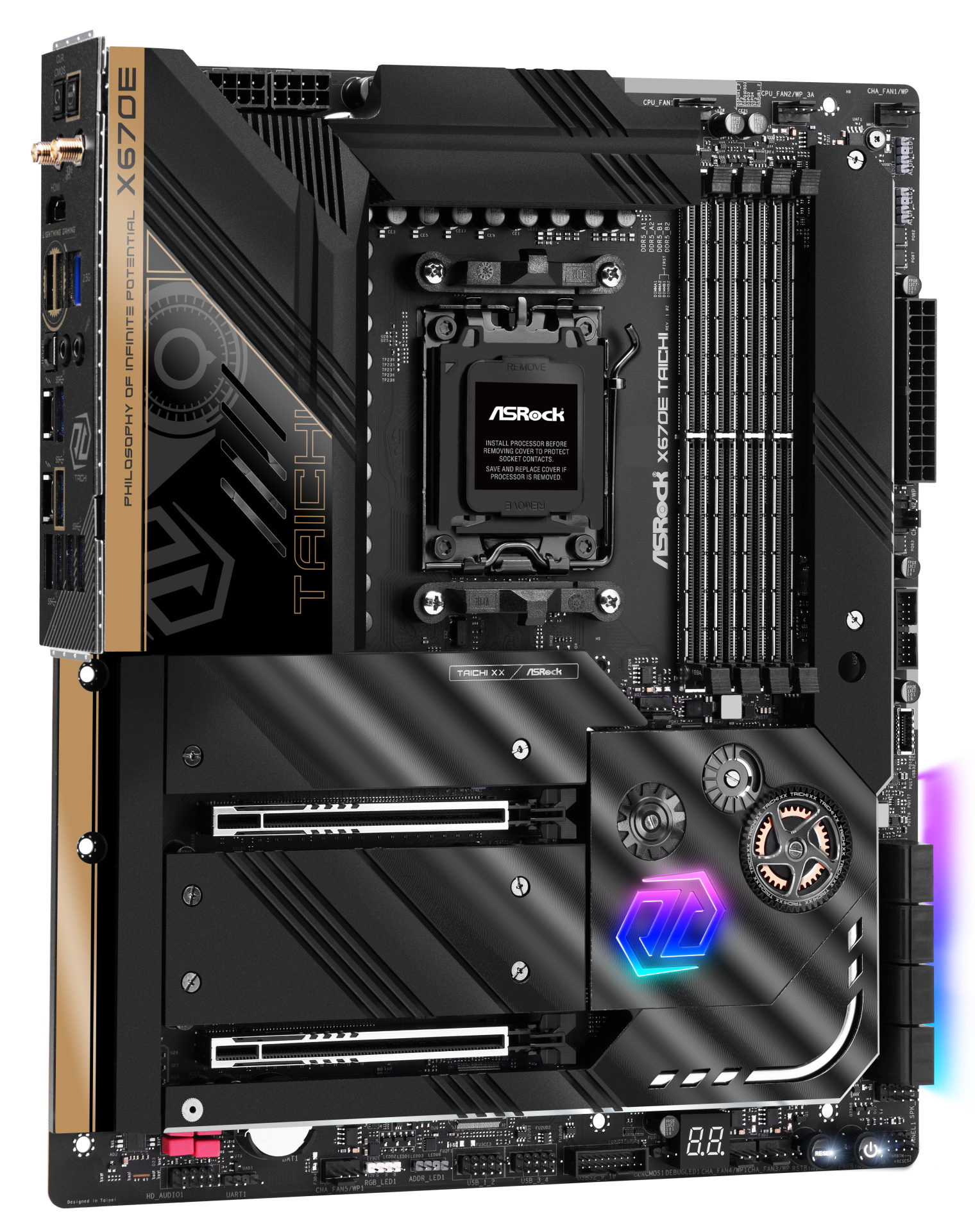
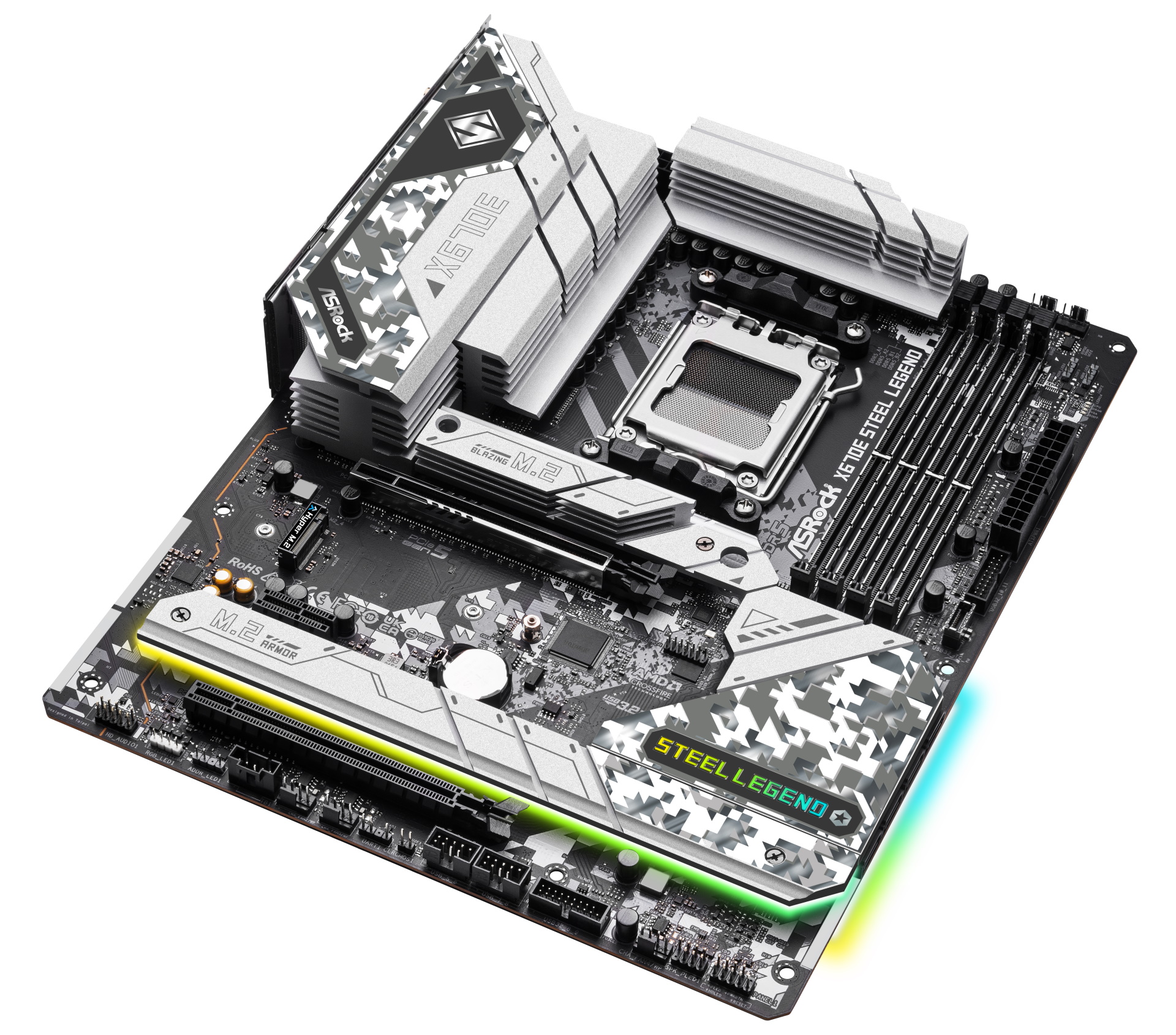

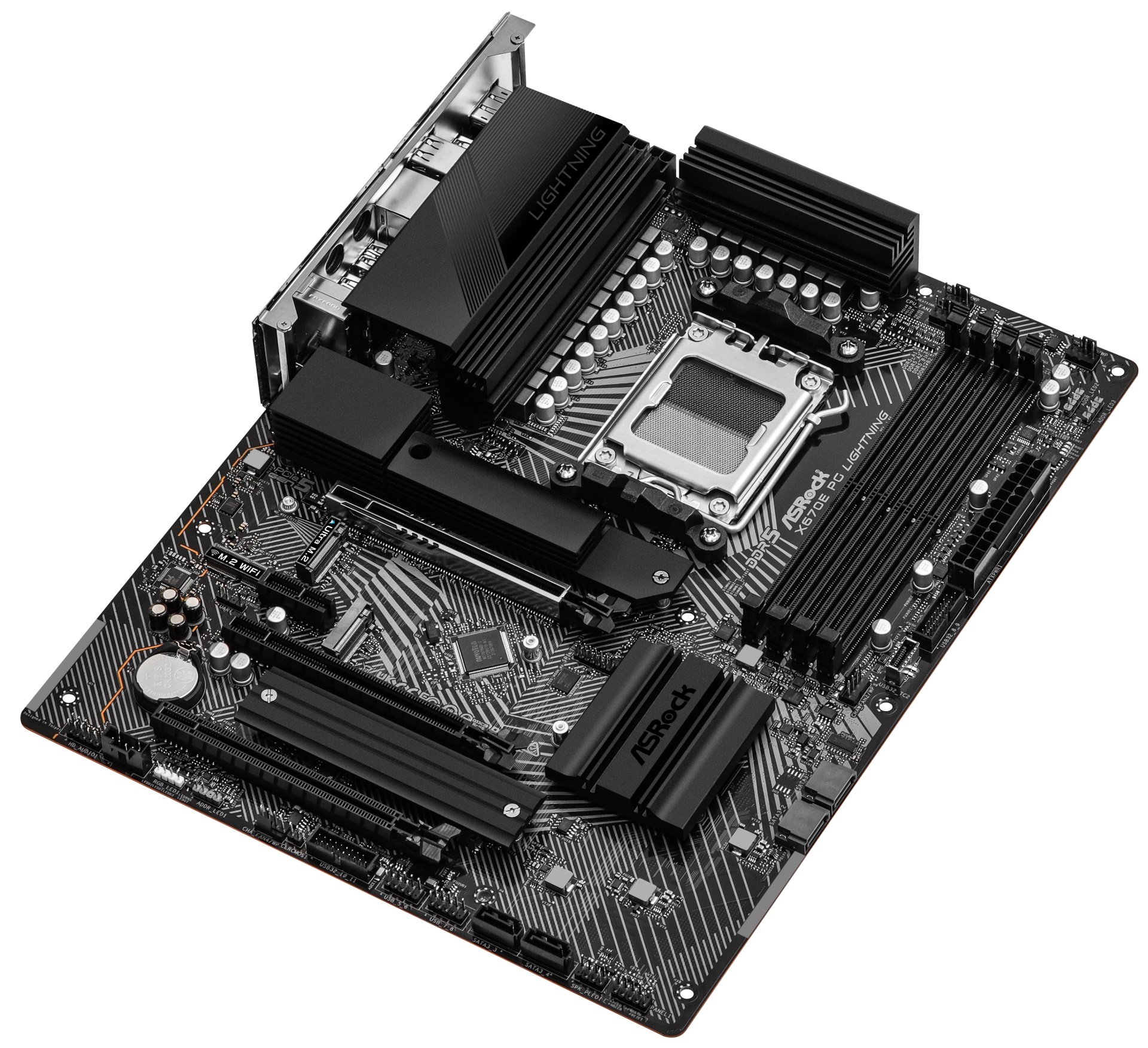
At the time we wrote this article, ASRock sent information regarding its X670 boards, but the B650 SKUs were not included, as they will launch in mid-October. From the details we have, you’ll see some familiar SKUs like the Taichi, Steel Legend, Pro and PG lines, as well as some new variants such as the 20th Anniversary Taichi Carrara and the entry-level PG Lightning. We’ve also spotted the B650 LiveMixer board on the web as well, but nothing is certain. Although we don’t officially see Micro ATX or ITX X670 boards, we imagine the lineup will fill up quickly after launch. Worth noting: ASRock says it will not have any X670 (non-”e”) SKUs, only X670E. The thinking is that X670 is the high-end while B650 fills that mid-range space.
All boards we have images of show an updated appearance, looking much different than the X570 and even Z690 versions. The new Taichi Carrara has a high-end marble appearance that’s truly unique to motherboards, while the ‘base’ Taichi, one of the better-looking boards around, also gets an improved aesthetic.
Outside of looks, the X670E boards all include PCIe 5.0 slot(s), a PCIe 5.0 M.2 socket, and more robust power delivery. Some even include USB 4 Type-C, a first on consumer motherboards.
Three of the boards (Steel Legend, Pro RS and PG Lightning) also support their new Blazing M.2 fan heatsink, replacing the basic heatsink already in place with a larger and actively cooled version. With the new PCIe 5.0 drives likely running as hot or hotter than many PCIe 4.0 drives, this could be a worthwhile accessory to prevent throttling of future ultra-fast storage devices. On the networking front, ASRock also keeps Killer-based networking on the Taichis, with Realtek and Intel on others.
Pricing information was not shared, but like all other boards, we expect a price increase over X570 and even Z690. Will we see an X670E Aqua? How about an OC Formula (or an Aqua OC)? What about venerable budget models like the Extreme? We can only wait and hope–and save up.
| Board | DRAM Slots/Capacity (Rating) | PCIe Slots (Total) | SATA Ports | M.2 Slots | NIC | Wi-Fi Type (6/6E) | VRM Phase Count |
|---|---|---|---|---|---|---|---|
| ASRock X670E Taichi/ Taichi Carrara | 4/128GB (6600+) | 2 | 8 | 4 | 2 (1G/2.5G) | 6E | 27 (105A) |
| ASRock X670E Steel Legend | 4/128GB (6600+) | 3 | 4 | 4 | 2 (1G/2.5G) | N/A | 19 |
| ASRock X670E Pro RS | 4/128GB (6600+) | 3 | 6 | 5 | 1 (2.5GbE) | 6E | 17 |
| ASRock X670E PG Lightning | 4/128GB | 4 | 4 | 4 | 1 (2.5GbE) | N/A | 17 |
Asus
- Updated aesthetics
- Teamed Power Architecture (on most boards), up to 110A
- AI Overclocking Based on CPU quality and Cooler Efficiency
- 2.5GbE and 10GbE NIC Available along with Wi-Fi 6E
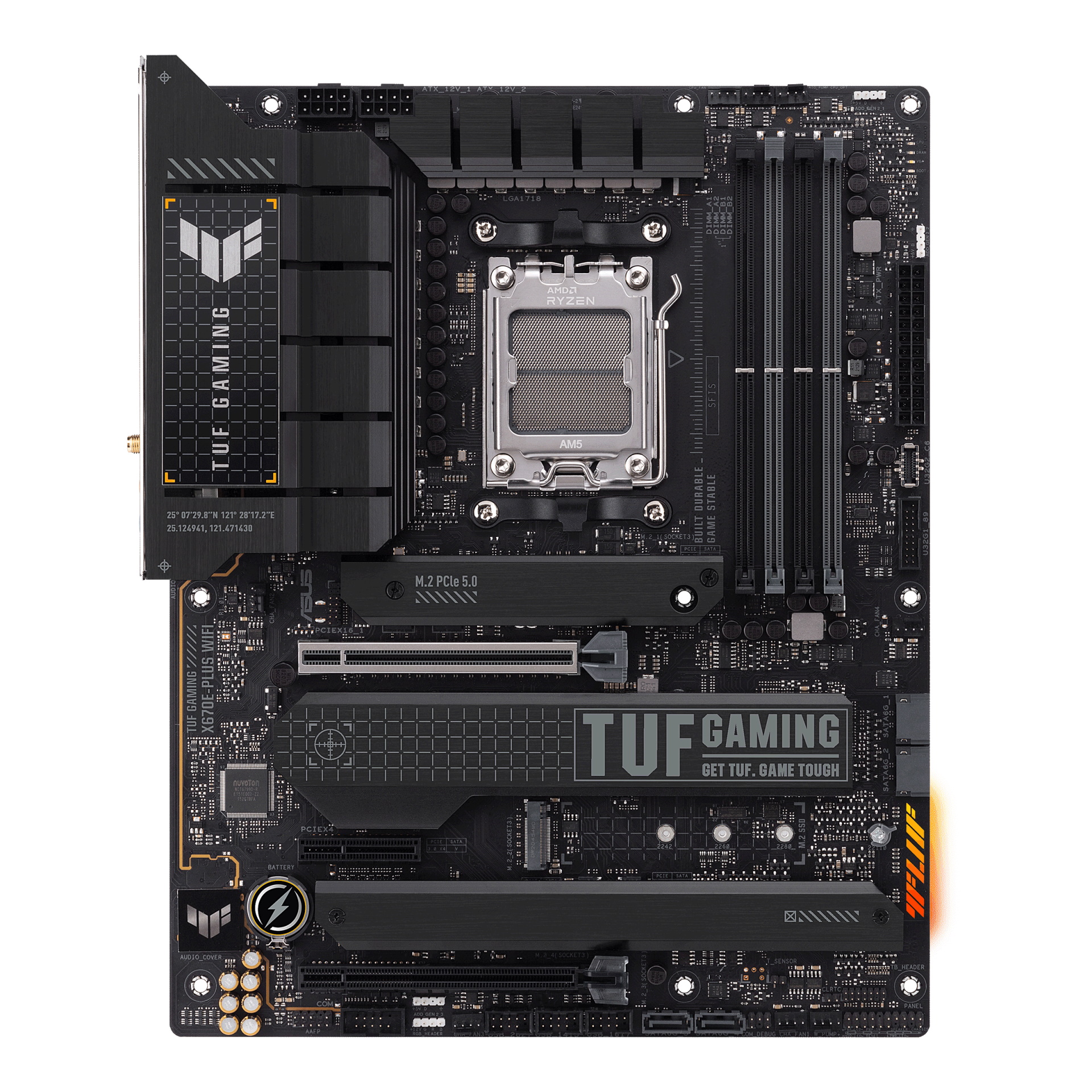
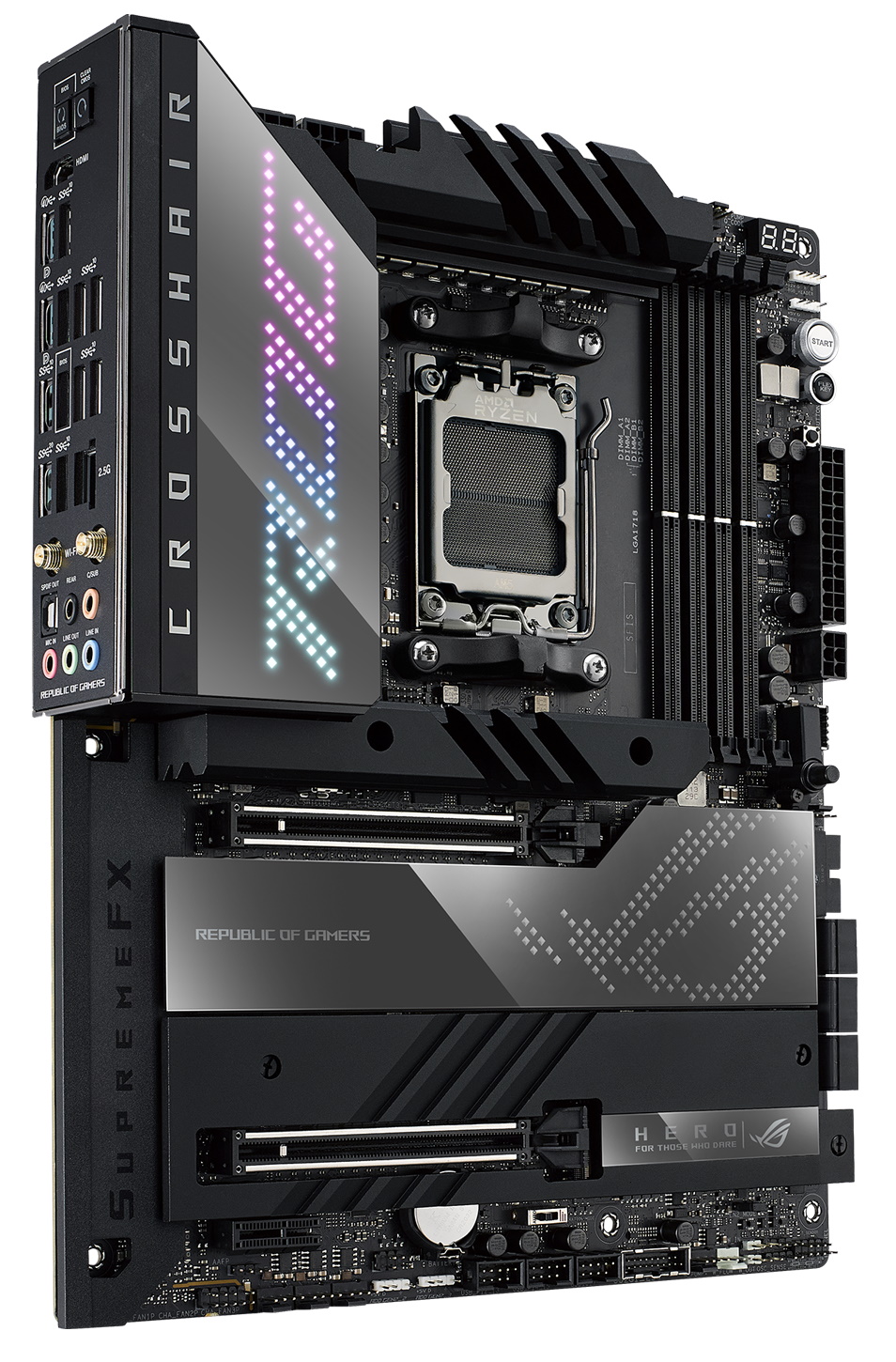
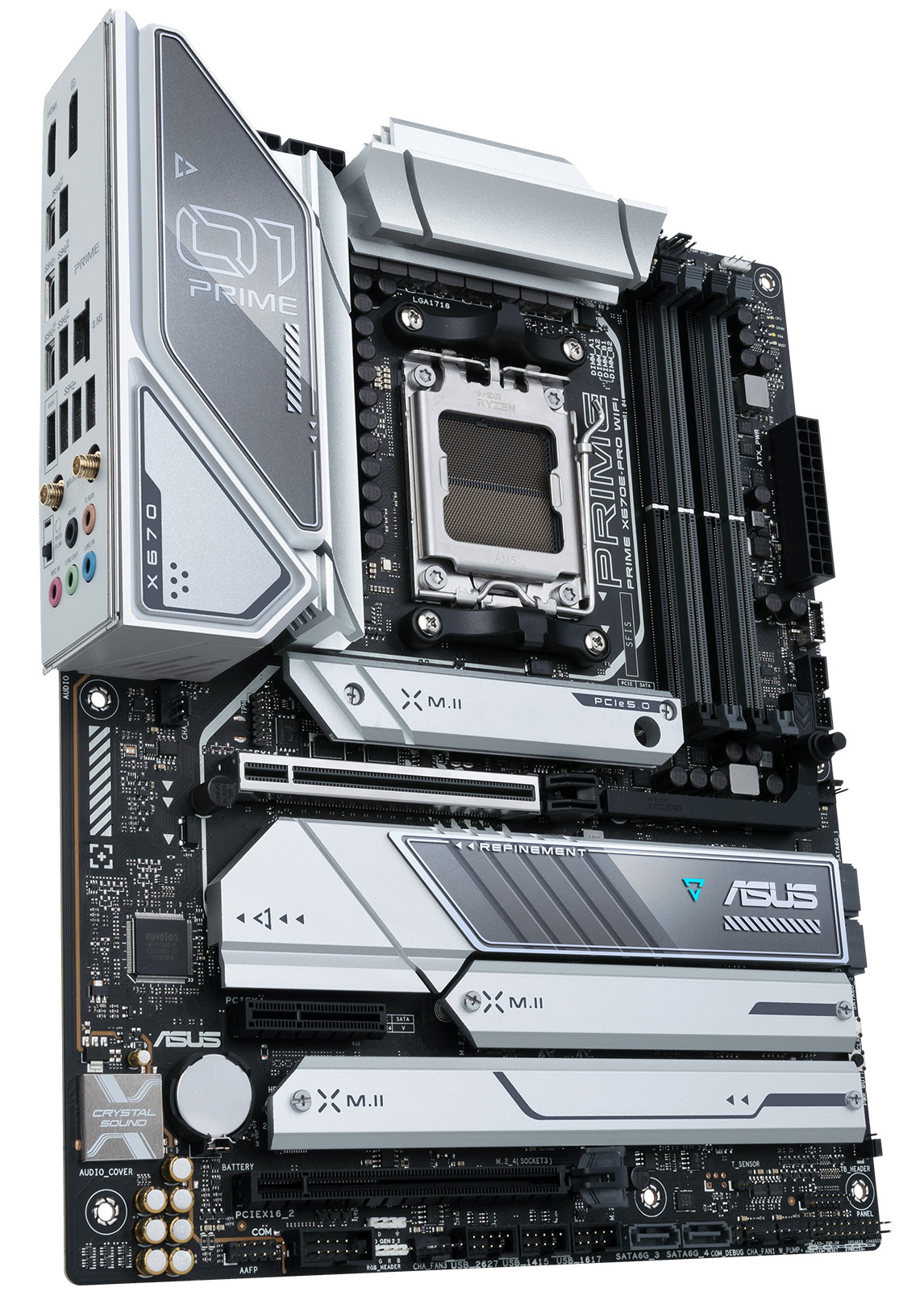
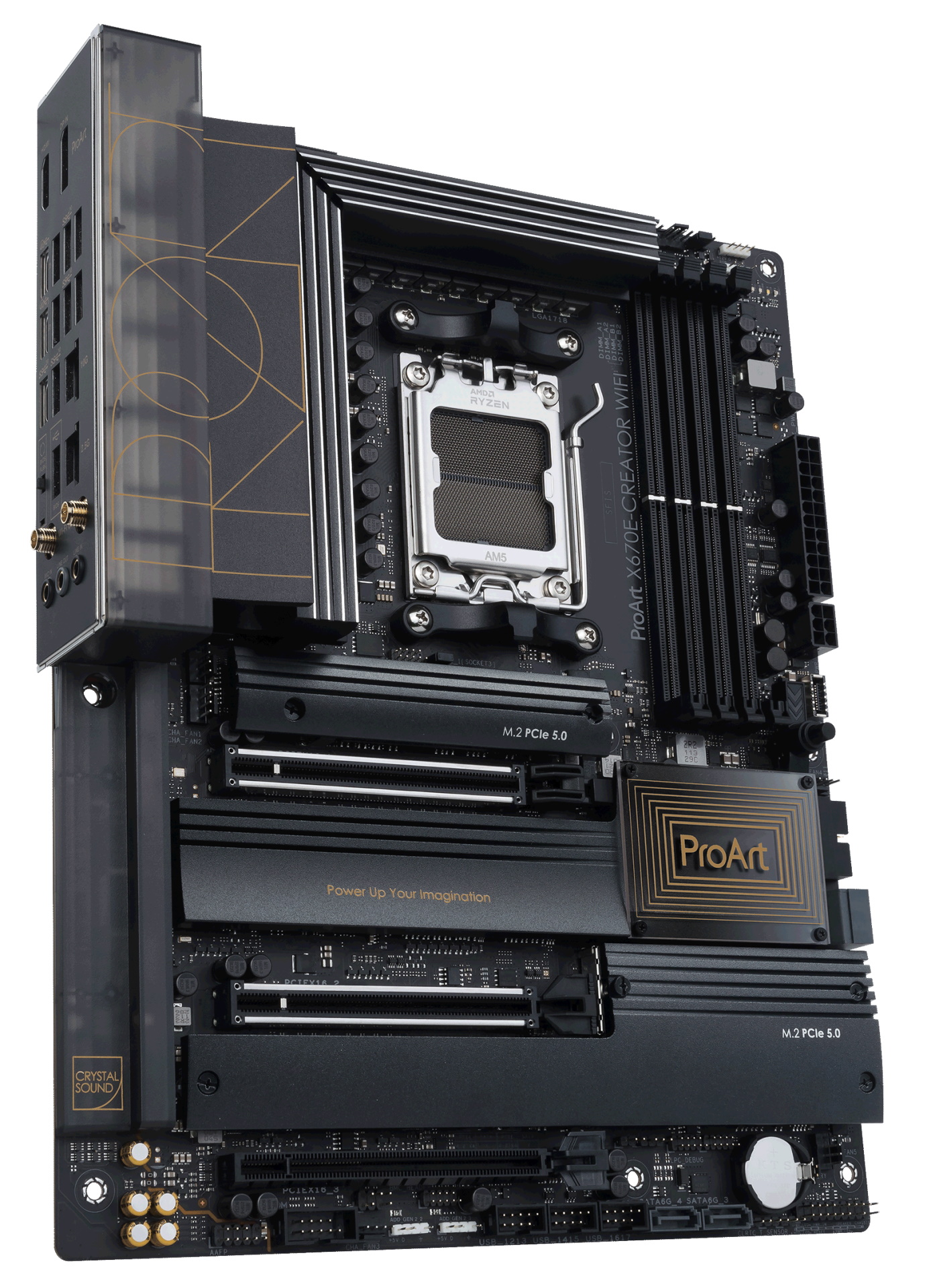



At launch, Asus (officially) brings to market seven motherboards that cover all of its product lines. You’ll see ROG SKUs (Crosshair Extreme/Gene/Hero and Strix Gaming), TUF (Gaming X670E-Plus WIFI), Prime (X670E-Pro WIFI, and ProArt (X670E Creator) models. What’s missing in the initial launch is official word of smaller Micro ATX and Mini-ITX size boards, along with several ROG Strix Gaming models. As time goes on, we’ll likely see the complete product stack fill out, and we haven’t even talked about the less-expensive X670 and B650 SKUs.
Like the rest of the board partners, Asus’ new X670E boards sport an updated appearance, PCIe 5.0 and DDR5 support, 2.5 GbE and Wi-Fi 6E on most SKUs (10 GbE on the Extreme), as well as updated power delivery to support AMD’s new Zen 4 processors including the flagship Ryzen 9 7950X. On the Crosshair Extreme, for example, Asus uses 20 phases for Vcore with 110A MOSFETs, the highest value we’ve seen so far. I don’t imagine most VRMs getting in the way of stock or overclocked operations on X670E/X670 parts.
Get Tom's Hardware's best news and in-depth reviews, straight to your inbox.
Along with the Dynamic OC Switcher we saw on the X570 Extreme, the Crosshair X670E Extreme/Gene/Hero now has Ryzen Core Flex, a set of ‘highly configurable’ algorithms for control over the CPU. You can set a slew of variables, including temperature limit, EDC, PPT and other settings to change based on core temp, current, or voltage through a simple dropdown in the UEFI. This functionality is courtesy of an onboard clock generator that separates from the Infinity Fabric, NBIO, PCIe, and memory.
Generically, all Asus X670/B650 boards support the new AMD Extended Profiles for Overclocking (EXPO), just like the rest. They also support AEMP (the previous-gen workaround to bypass PMIC on the RAM) and the familiar DOCP. Asus lists memory support up to DDR4-6400, but this will vary by board.
In all, Asus has plenty of X670E options available at launch that should work for most users. While we’re missing an X670E ITX board out of the gate, we’ll certainly see that down the line. The less expensive options, including B650 boards, we’ll also see sometime after mid-October. I hope we see an overclocking-focused board like the Apex, plus ITX boards soon, as they are some of my favorites. We’ve listed what Asus provided below.
| Board | DRAM Slots/Capacity | PCIe Slots (Total) | SATA Ports | M.2 Slots | NIC | Wi-Fi Type (6/6E) | VRM Phase Count |
|---|---|---|---|---|---|---|---|
| ROG Crosshair X670E Extreme | 4/128GB | 3 | 6 | 5 | 2 (2.5G/10G) | 6E | 20+ (110A) |
| ROG Crosshair X670E Hero | 4/128GB | 3 | 6 | 5 | 1 (2.5GbE) | 6E | ?? |
| ROG Crosshair X670E Gene | 2/64GB | 2 | 4 | 3 | 1 (2.5GbE) | 6E | ?? |
| ROG Strix X670-E WIFI Gaming | 4/128GB | 3 | 4 | 5? | 1 (2.5 GbE) | 6E | ?? |
| Prime X670E-Pro WiFi | 4/128GB | 3 | 6 | 5 | 2 (1G/2.5G) | Yes (Wi-Fi 6) | 16 |
| TUF Gaming X670E-Plus WiFi | 4/128GB | Row 5 - Cell 2 | Row 5 - Cell 3 | Row 5 - Cell 4 | Row 5 - Cell 5 | Row 5 - Cell 6 | TK |
| ProArt X670E-Creator WiFi | 4/128GB | 3 | 6 | 2 | 2 (1G/2.5G) | Yes (Wi-Fi 6) | 16 |
Biostar
- Up to 22-phase design
- Wi-Fi 6E capabilities on all boards
- Updated and improved appearance
At this time, we know Biostar is releasing one X670E-based board. So far, we haven’t seen a mention of the less expensive GTA board that compliments the Valkyrie. Like the other partners, Biostar updated its design, power delivery and implemented all of the PCIe 5.0 goodies, including slots and M.2 sockets. The flagship Valkyrie sports a robust 105A 22-phase VRM to support the new chips, a quality audio codec and a slew of rear IO USB ports (nine), including a 20 Gbps USB 3.2 Gen 2x2 Type-C port (no USB 4 here). Outside of that, we again hope to see improvements in the UEFI BIOS implementation. Although functional, Biostar’s offering is not up to par with the others.
| Board | DRAM Slots/Capacity | PCIe Slots (Total) | SATA Ports | M.2 Slots | NIC | Wi-Fi Type (6/6E) | VRM Phase Count |
|---|---|---|---|---|---|---|---|
| X670E Valkyrie | 4/128GB | 3 | 6 | 4 | 1 (2.5GbE) | 6E(?) | 20 (105A) |
EVGA
It still feels odd mentioning EVGA and AMD in the same breath, but here we are again. Late in the game, and a surprise to almost everyone, EVGA launched their first-in-a-long-time AMD-based motherboard in the X570 Dark. After our review, we determined it was a quality entrant in the X570 space, so we’re looking forward to seeing something down the line from EVGA. It’s certainly going to be interesting to see how the company functions after its dramatic exit from its partnership with Nvidia.
| Board | DRAM Slots/Capacity | PCIe Slots (Total) | SATA Ports | M.2 Slots | NIC | Wi-Fi Type (6/6E) | VRM Phase Count |
|---|---|---|---|---|---|---|---|
| X670E Dark? | ?? | ?? | ?? | ?? | ?? | ?? | ?? |
Gigabyte
- 70-105A VRMs
- Daisy Chain + Shielded Memory Routing
- 2.5 GbE-plus NICs on all models (up to 10 GbE)
- Wi-Fi 6E on all X670E/670 Aorus models
- Four M.2 sockets
- Updated styling
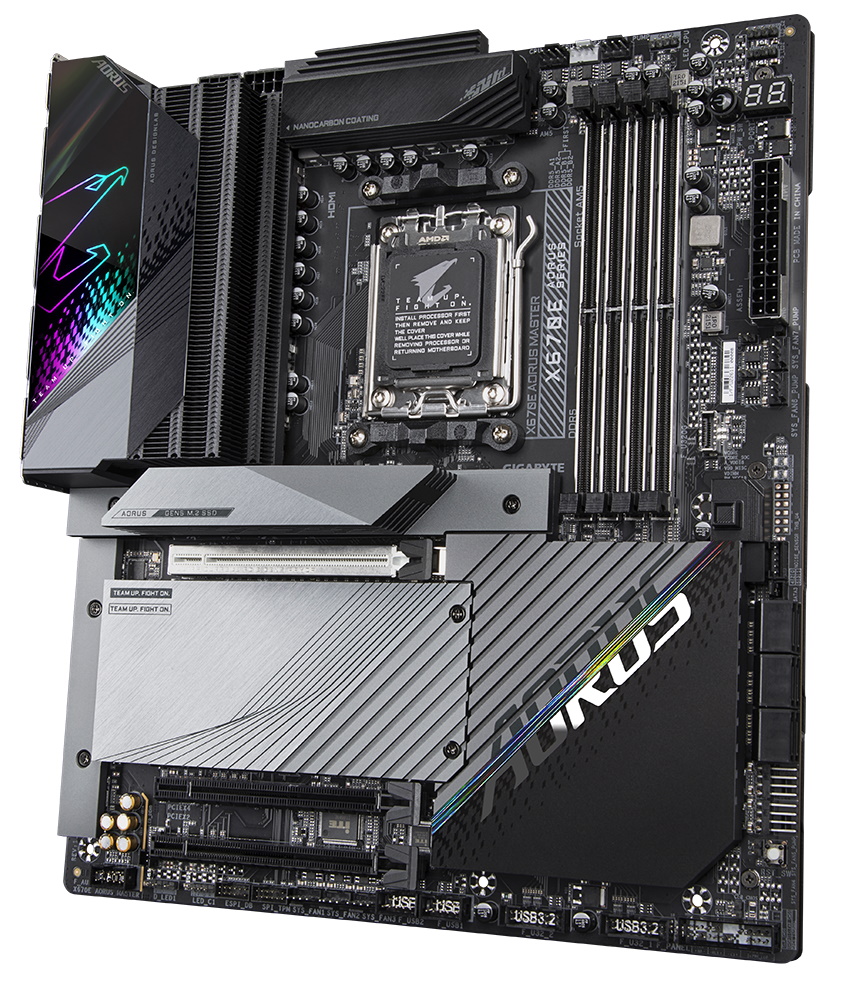
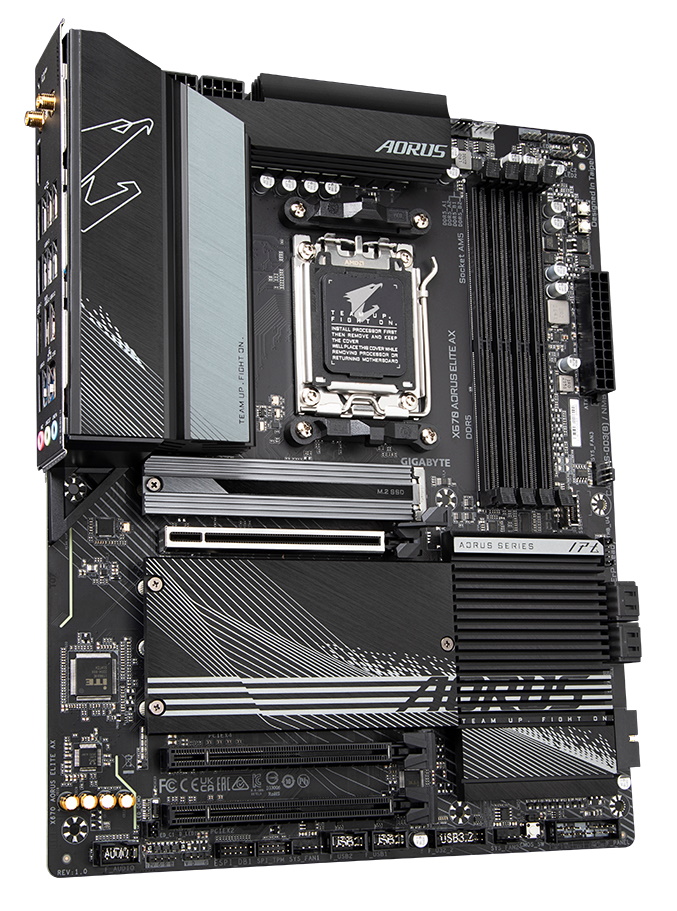
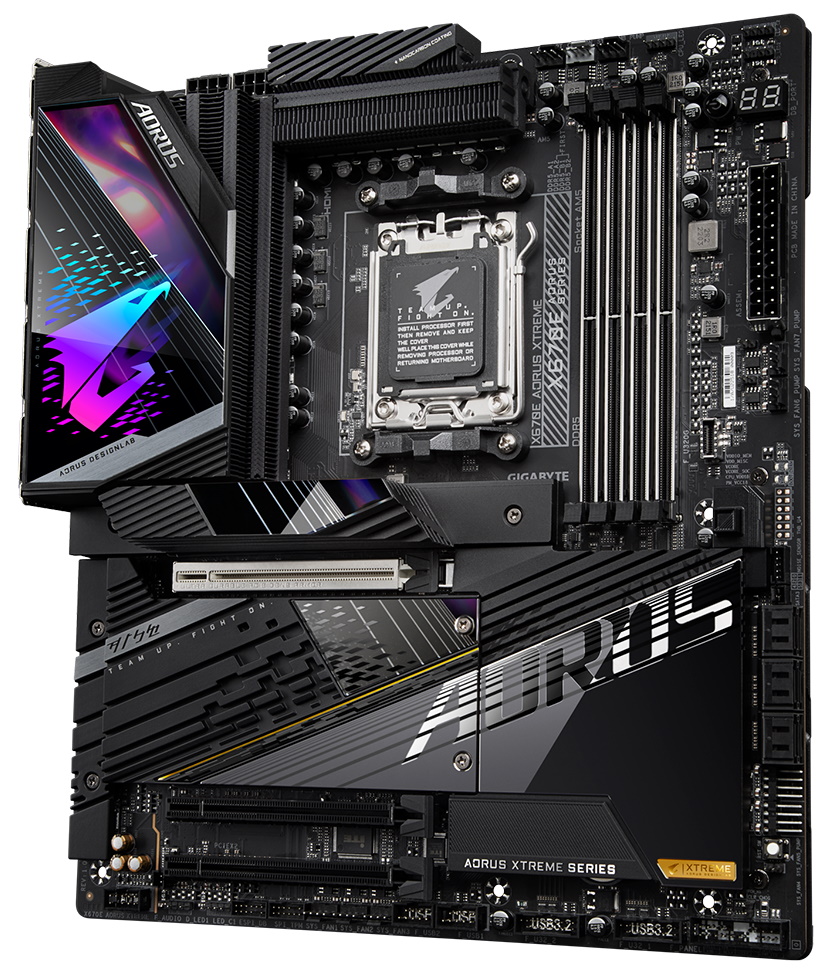
Gigabyte joins the X670 party with four boards at launch from the gaming-centric Aorus line. The first Ryzen 7000 falcons are the X670E Aorus Xtreme, X670E Aorus Master, X670 Aorus Pro Ax, and the X670 Aorus Elite AX. Later, the company will likely release the more budget-oriented Gaming X and UD series. Though nothing was mentioned officially, we’ve also seen some leaks on the Aero line (designed for Creators) as well. Surely the product stack will fill out over time and include Micro ATX and Mini-ITX boards.
The Aorus X670E/X670 boards also step up their VRM game, with the Aorus Pro AX and Elite AX offering a twin (mirrored configuration with the controller) 16-phase VRM with 90A and 70A SPS MOSFETs, respectively. The high-end Master uses a ‘direct’ configuration with 16 phases (105A SPS MOSFETs), while the flagship Xtreme uses 18 phases and the same 105A SPS MOSFETs as the Master. Although I haven’t tested the platform yet, I’d imagine the CPU thermals will again be the performance limit, as opposed to the motherboard.
Surprisingly, we don’t see the latest Realtek codec (ALC4080/4082) on the high-end boards here. The ALC1220-VB2 is a fine audio solution that most find more than acceptable, but to not see the latest and greatest on a flagship-class board was a bit disappointing. From the specifications Gigabyte provided, these all look like well-equipped and good-looking motherboards. Let’s hope the price is as good as it was with most of the company’s Alder Lake-capable motherboards. I also wish to see the Waterforce board down the road, as that was a real beauty with a great set of specs to back it up. I was also partial to the overclocking-focused Tachyon.
| Board | DRAM Slots/Capacity | PCIe Slots (Total) | SATA Ports | M.2 Slots | NIC | Wi-Fi Type (6/6E) | VRM Phase Count |
|---|---|---|---|---|---|---|---|
| Gigabyte X670E Aorus Xtreme | 4/128GB | 3 | 6 | 4 | 1 (10 GbE) | 6E | 22 (105A) |
| Gigabyte X670E Master | 4/128GB | 3 | 6 | 4 | 1 (2.5 GbE) | 6E | 20 (105A) |
| Gigabyte X670 Aorus Pro AX | 4/128GB | 3 | 6 | 4 | 1 (2.5 GbE) | 6E | 20 (90A) |
| Gigabyte Z690 Aorus Master | 4/128GB | 3 | 4 | 4 | 1 (2.5 GbE) | 6E | 20 (70A) |
MSI
- 80A to 105A VRMs
- 2.5 GbE LAN and Wi-Fi 6E or 6E for all Models
- Memory support up to DDR5 6666+(OC)
- Front Gen 2x2 Type-C port for all X670 models
- Gen 2x2 Front panel port supports PD to 20V@3A 60W
- New styling
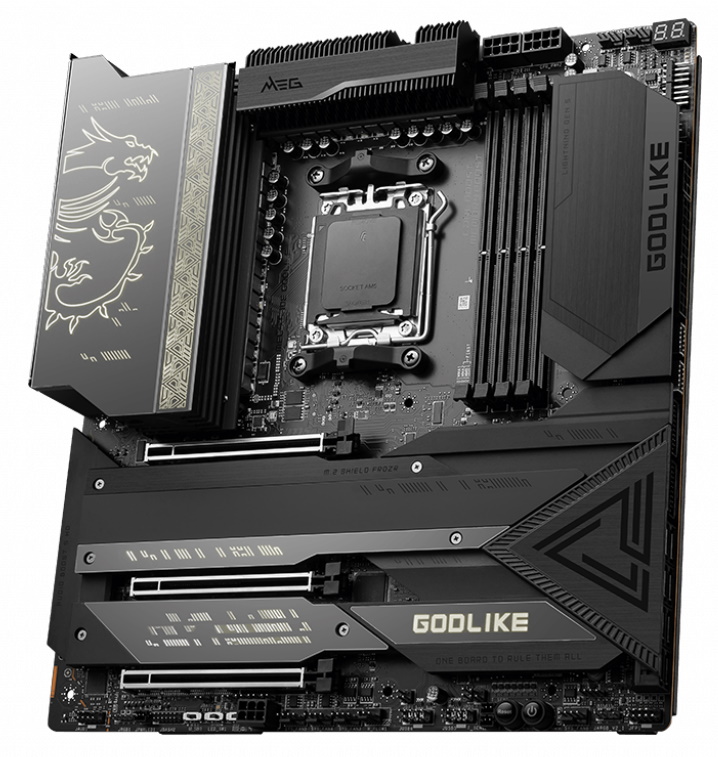

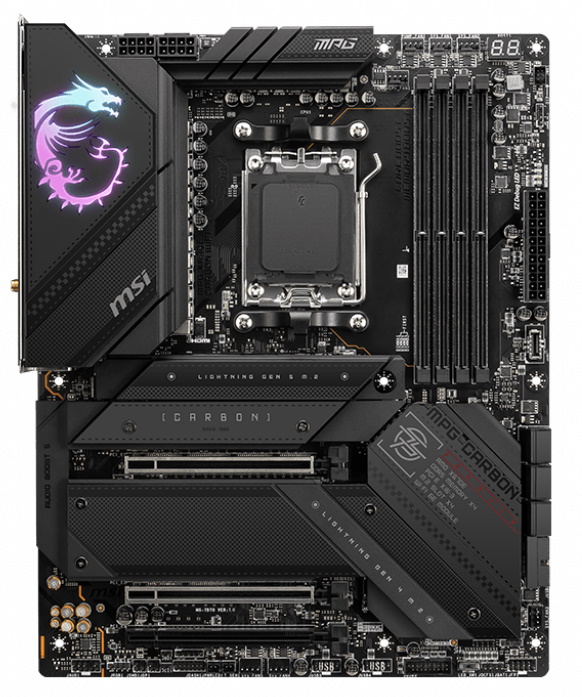

MSI officially starts off X670 with four SKUs. From the flagship on down, on launch we’ll see the MEG X670E Godlike, MEG X670E Ace, MPG X670E Carbon WIFI, and the Pro X670-P WIFI for creators. Unofficially, we’ll see several B650-based boards as well, but that’s down the line a bit. While we don’t have any details now, the various sites have several models, including the Carbon, Edge, Tomahawk/Mortar and Pro series that we’re all familiar with. MSI looks to have a complete lineup, including ITX and Micro ATX motherboards, as expected.
Like other board partners, MSI started by updating its power delivery to support the power-hungry AM5 processors. The listed X670E/X670 boards range from 14 to 24 phases dedicated to Vcore with up to 105A MOSFETs in the Godlike. In addition to the beefed-up power delivery, MSI updated the thermal design of the heatsinks (Wavy fin) with Cross heatpipes, eight or 10-layer PCBs, a screwless M.2 Shield Frozr with EZ M.2 Clip, front USB 3.2 Gen 2x2 support PD 60W, 10G LAN on MEG motherboards, and finally the M-Vision Dashboard (a 4.5-inch IPS touch panel).
MSI didn’t stop with the hardware either, making some aesthetic tweaks. The Godlike and Ace still rock the black or black-and-gold theme, while the Carbon WIFI and Pro lines also receive a couple of appearance updates. One of the things I noticed in MSI’s lineup (and most partners so far) is a reduction in the number of integrated RGBs. Gone are the days of excessively gaudy illumination across almost the entire lineup. That’s been replaced by more tactfully implemented designs. If you’re left wanting more, you can always add lights via headers.
At launch, MSI only has a few boards listed, but will surely release a wide range of motherboards to fill out the product stack before too long. We’ll see several more B650E/B650 in a month or so and additional boards from X670E/X670 like the Unify series we’ve seen on Intel. For those looking for an ITX or Micro ATX board out of the gate, you’ll have to wait a bit (at least until October). On paper, we like what MSI has to offer and can’t wait to get these on the test bench.
| Board | DRAM Slots/Capacity | PCIe Slots (Total) | SATA Ports | M.2 Slots | NIC | Wi-Fi Type (6/6E) | VRM Phase Count |
|---|---|---|---|---|---|---|---|
| MSI MEG X670E Godlike | 4/128GB | 3 | 8 | 4(+2) | 2 (2.5G/10G) | 6E | 27 (105A) |
| MSI MEG X670E Ace | 4/128GB | 3 | 6 | 4(+2) | 1 (10GbE) | 6E | 25 (105A) |
| MSI MPG X670E Carbon WIFI | 4/128GB | 4 | 6 | 4 | 1 (2.5GbE) | 6E | 21 (90A) |
| MSI Pro X670-P WIFI | 4/128GB | 4 | 6 | 4 | 1 (2.5GbE) | 6E | 17 (80A) |
NZXT
We reached out to NZXT for information, but they also didn’t respond in time for publication. We expect to see the company in the market again with an X670 SKU. If their naming convention remains the same, we should see an N7 X670E model. We’ve seen some articles listing an NZXT part, but at the moment, it’s still a rumor. In the past, the NZXT boards were based on an ASRock part, and we don’t expect that to change, especially considering the rumors have come from a list of ASRock boards. With Z690, we saw a more budget-oriented N5 SKU, and perhaps we’ll see that with AMD as well.
| Board | DRAM Slots/Capacity | PCIe Slots (Total) | SATA Ports | M.2 Slots | NIC | Wi-Fi Type (6/6E) | VRM Phase Count |
|---|---|---|---|---|---|---|---|
| NZXT N7 X670? | 4/128GB?? | ?? | ?? | ?? | ?? | ?? | ?? |
| NZXT N5 X670? | 4/128GB?? | ?? | ?? | ?? | ?? | ?? | ?? |
Compared to Z690, early X670 information was disappointingly sparse. Officially, there are 22 boards, compared to the over 50 (most of which were confirmed) we saw with the launch of Alder Lake. Even though the number of boards isn’t that high, there’s something above for most builders. with more coming down the pike. As usual, none of the board partners mentioned pricing before launch, but we know they will be higher than X570 and probably around Z690 price points (if not higher). We’ll try to fill in the blanks as we get more information.
Only testing will tell if AMD’s claimed 13% IPC increase for these AM5 “Raphael” CPUs will retake the gaming crown from Intel. AMD sure thinks they have a winner, and from the leaked benchmarks, it looks like a nice performance increase with a significant clock speed bump. Seeing 5.7 GHz-plus out of the box is quite a feat. With the great PC equinox coming up, Intel/AMD/NV all releasing CPUs and Video cards within a couple of months of each other. If you combine that with the falling price of existing GPUs and SSDs, the end of 2022 is shaping up to be a great time to build a new PC.
MORE: Best Motherboards
MORE: How To Choose A Motherboard
MORE: All Motherboard Content

Joe Shields is a staff writer at Tom’s Hardware. He reviews motherboards and PC components.
-
allan nielsen Your diagram shows DP 1.4 and HDMI 2.0. There is no way that is correct. HDMI 2.0 is history and AMD has said that there will be DP 2.0 on 7000 boards.Reply -
khaakon Where are all the little un's? I'd love me a brand new x670e mini-ITX, specced to the gills w/ connectivity.Reply -
wifiburger Price is everything. This overview is worthless to me without the price list.Reply
Not interested in AM5, but I can tell you if I was I would get the cheapest/most basic/ugly board with the best VRM / MEM OC because everything else is too much.
I payed ~300$ for my x570 Aorus Master board. This was my first premium mid range board and really happy with it.
AM5 platform has a huge problem... cost
Having to spend 300$+ on premium ddr5 kit to get to 62ns latency.... that's just hilarious ! -
TheJoker2020 Reply
Anus has one listed.khaakon said:Where are all the little un's? I'd love me a brand new x670e mini-ITX, specced to the gills w/ connectivity.
The "ROG STRIX X670E-I GAMING WIFI"
Looks neat if thats your thing. When the desktop APU's come out for ITX, I might be interested in upgrading my secondary / backup PC as that has no need for a beefy GPU, but I have always seen the appeal, but have never needed to save such a small amount of space at the expense of money, upgradability, temperatures and noise for a gaming system. Each to their own.
https://www.asus.com/microsite/motherboard/AMD-AM5-X670-B650/ -
thisisaname Reply
Price and availability are the things for me, no good the board being cheap if you can not buy it due to lack of availability.wifiburger said:Price is everything. This overview is worthless to me without the price list.
Not interested in AM5, but I can tell you if I was I would get the cheapest/most basic/ugly board with the best VRM / MEM OC because everything else is too much.
I payed ~300$ for my x570 Aorus Master board. This was my first premium mid range board and really happy with it.
AM5 platform has a huge problem... cost
Having to spend 300$+ on premium ddr5 kit to get to 62ns latency.... that's just hilarious ! -
drivinfast247 ReplyTheJoker2020 said:Anus has one listed.
The "ROG STRIX X670E-I GAMING WIFI"
Looks neat if thats your thing. When the desktop APU's come out for ITX, I might be interested in upgrading my secondary / backup PC as that has no need for a beefy GPU, but I have always seen the appeal, but have never needed to save such a small amount of space at the expense of money, upgradability, temperatures and noise for a gaming system. Each to their own.
https://www.asus.com/microsite/motherboard/AMD-AM5-X670-B650/
Who has one listed? Lol
